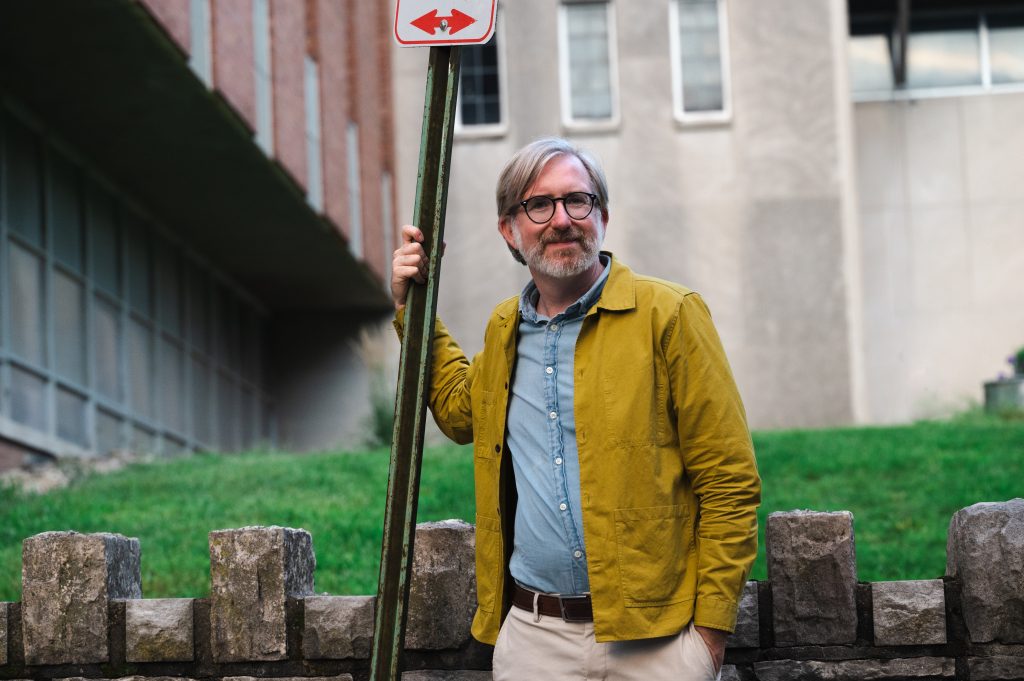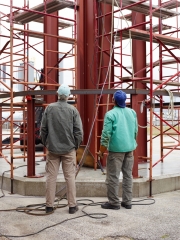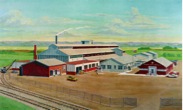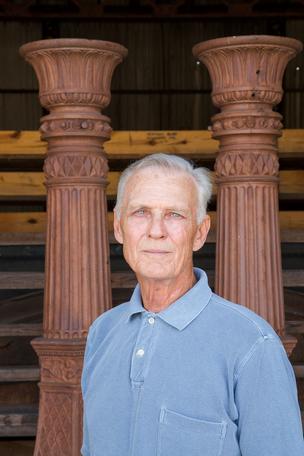From President Mike Jackson, FAIA, and Executive Director Michael R. Allen
The National Building Arts Center (NBAC) is an unparalleled endeavor, joining the nation’s largest collection of architectural artifacts with a vast, comprehensive library and archive on the built environment. Located in a historic steel casting foundry near St. Louis, NBAC is a museum in the making – a truly epic project started by the late salvage expert and preservationist Larry Giles.
For some of you reading, NBAC may be the coolest preservation organization that you have never heard of. For others, NBAC may be a project that you have visited once before or just read about somewhere. You may wonder when this museum will finally open its doors and get up and running.
We’re here to tell all of you that the day has arrived. The NBAC is up and running – in many ways that we are thrilled to share:
Staffing: In September, Michael Allen moved from President of the Board of Directors to Executive Director. Michael already has plotted a draft strategic vision for the next five years of NBAC, identified new programs and sources of funding, and has been an ambassador literally across the globe. Emery Cox, Archives and Collections Manager, has celebrated his one-year anniversary as our first full-time employee. We remain amplified by a platoon of volunteers who work on facilities, events, graphic design and research. Of course, we want to grow our ranks even further.
Collaboration: We are pleased to announce that we are collaborating with the Pulitzer Arts Foundation on a major exhibition of artifacts from our collections set to open at the Pulitzer in September 2023. The exhibit will allow us to demonstrate the power of our collections to tell captivating, challenging stories around the built environment. A course at Washington University in St. Louis’ Sam Fox school of Design and Visual Arts also will support the exhibition. In August, the Missouri History Museum included NBAC in the opening of its Coloring St. Louis exhibition.
APT Collaboration: We have continued our contributions to the Association for Preservation Technology (APT) Building Technology Heritage Library, a free, public online repository. This summer, our intern Paul Davey scanned 202 documents (spanning 7,218 pages) and added them to the Library. With help from Paul and volunteer, NBAC has posted almost 700 documents relating to terra cotta, cast iron and brick to the Building Technology Heritage Library.
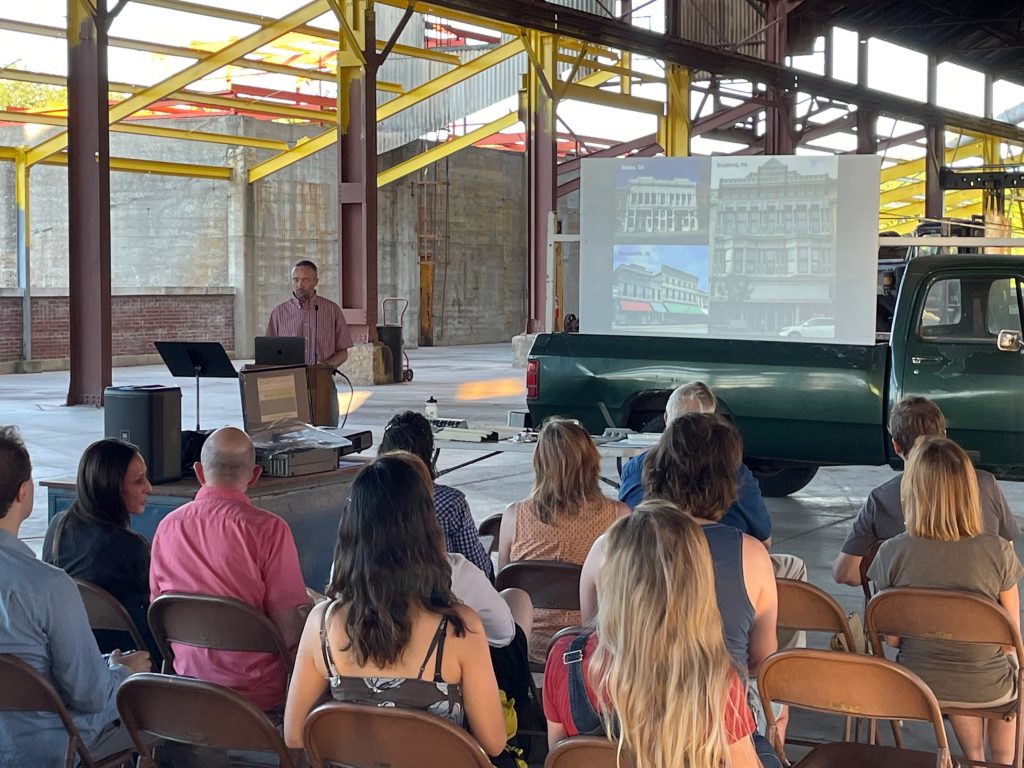
Tours and Programs: We have now completed over one year of regular docent-led tours of our collections (have you been?), and we plan to continue. Our first summer lecture series – including talks on cast iron storefronts, terra cotta in St. Louis, problems in building rehabilitation and the Mesker Brothers sheet metal fronts – drew steady attendance. We are planning additional programs, including special tours of the library and archives offering a deep dive into our holdings. We also will be branching out to other cities, with plans for events in New York City already underway.
Appearances: Our staff and board members served on panels or gave lectures throughout the year, including at the annual gathering of the Walter Burley Griffin Society in Chicago, The Cultural Landscape Foundation’s What’s Out There Weekend, the Indiana Statewide Historic Preservation Conference and the Ironbridge Centre for Heritage at the University of Birmingham, UK. Additionally, we answered scores of email and phone inquiries, participated in media interviews and otherwise made our people available to share knowledge.
Collections: Directed by Emery Cox, we finally have begun the herculean task of cataloging our library volumes, archival materials and built environment artifacts. This work has shown us that we have probably underestimated the scope of our holdings! Very soon we will open the database to the public, 24/7 and free of charge. We recently have partnered with Landmarks Association of St. Louis and the Southern Illinois University-Edwardsville Museum to offer solutions for artifact storage.
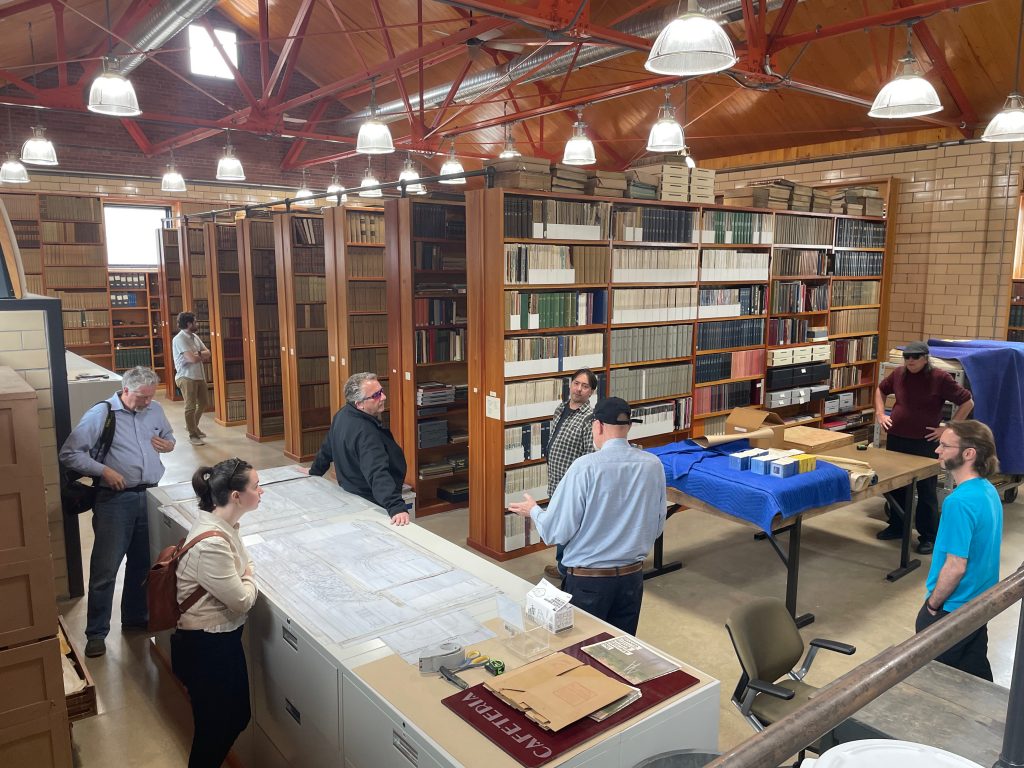
Accessions: Although we are not actively working on large-scale recovery projects these days, we have accessioned nearly 1,000 items in the last year (books, archival materials and artifacts). Gifts have ranged from the White Pine Monographs to mid-century modern glass block. Staff have ensured that each item comes with a contract of gift and is entered into our catalog. We also are pleased to announce that – after years of planning and pandemic supply chain disruptions – “Little Liberty,” the Statue of Liberty replica gifted to us by the Brooklyn Museum will arrive in 2023. We plan events both in New York City and at NBAC to commemorate this American odyssey.
Facilities: Last, but never least, is the historic Sterling Steel Casting foundry that we call home. This year we added new signage – with more being added soon – to make NBAC more visible to visitors. We now have an NBAC campus guide with map of our collections for visitors to use. We finished a perimeter fence so that the collections are now 100% secure. We have made safety and accessibility modifications. The Illinois Painters District Council Local 58 sent apprentices to help us continue restoring the safety yellow in our main foundry building. The facility needs are vast, but we have made progress in making the facility more user-friendly.
While our founder set us on a path toward success, we have accelerated progress. To keep up this pace, your support is invaluable. We wish you a wonderful end of the year, and look forward to the work we can do together next year!
Please join us in building on this momentum by making a tax-deductible contribution. Donate here.
